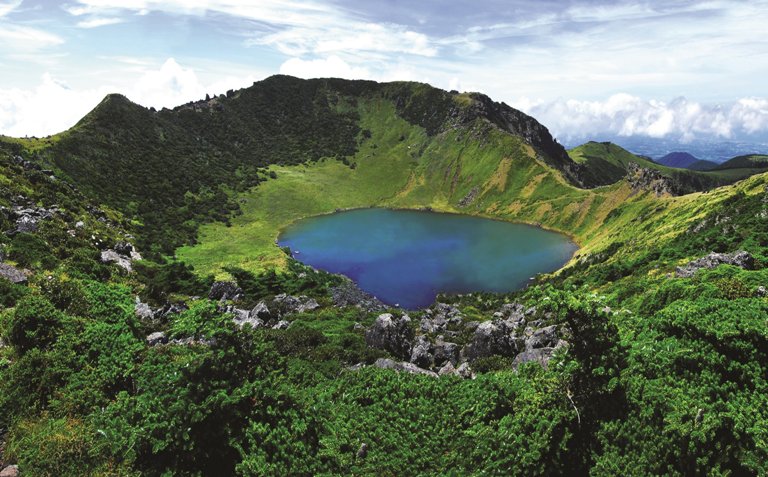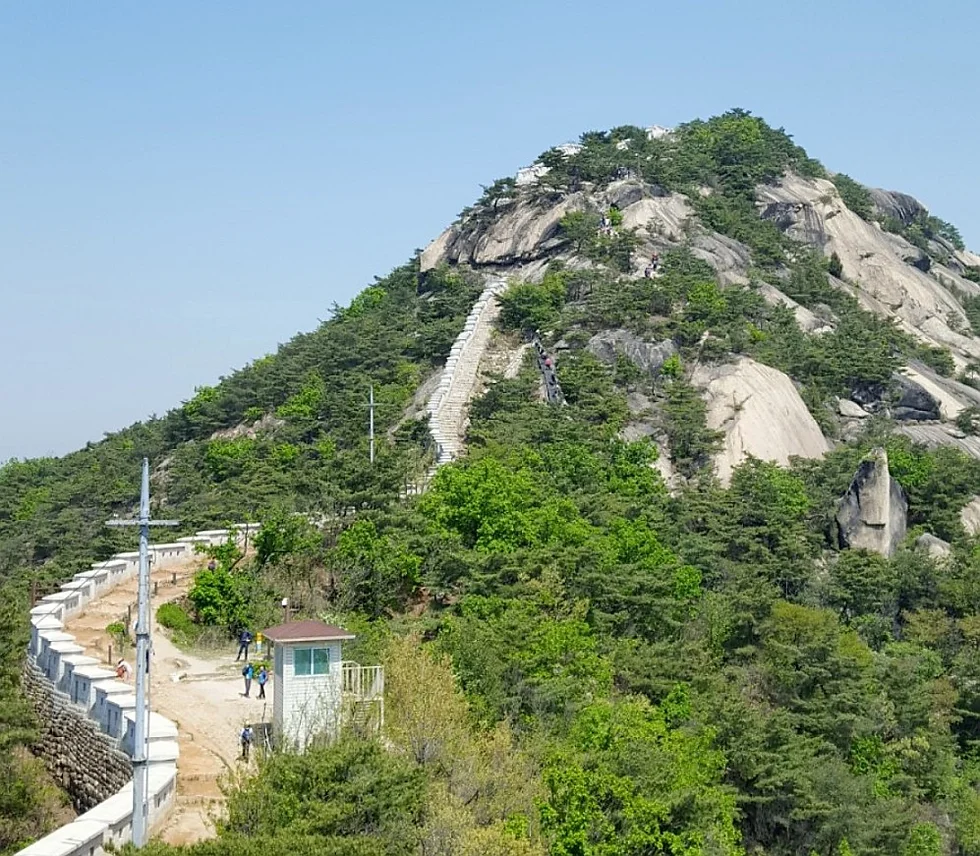5 Hiking Trails You Have to Trek When Visiting South Korea
South Korea, renowned for its vibrant cities and rich cultural heritage, is equally celebrated for its stunning natural landscapes. Hiking enthusiasts can find an array of trails that cater to all levels of experience, offering breathtaking views and a chance to reconnect with nature. If you’re planning a trip to South Korea or find yourself in a myTEFL job placement and need something to do, here are five hiking trails you absolutely cannot miss!

1. Bukhansan Main Route
Location: Seoul
Distance: Approximately 7 kilometers (4.3 miles) round trip
Difficulty: Moderate to Strenuous
Bukhansan National Park is a gem nestled in the heart of Seoul, making it incredibly accessible for both locals and visitors. The Bukhansan Main Route is one of the most popular trails, offering a challenging yet rewarding hike. Starting from the Bukhansanseong Fortress, this trail ascends through rocky paths and lush forests to the summit of Bukhansan Mountain, which stands at 836 meters (2,742 feet).
The hike is renowned for its stunning panoramic views of Seoul and its surrounding areas. On clear days, you can see the Han River, the city skyline, and even distant mountains. The trail features a variety of terrain, from steep rock faces to more gentle slopes, providing a dynamic hiking experience. Remember to bring sturdy footwear and plenty of water, as the trail can be demanding, especially during the summer months.
2. Hallasan Summit
Location: Jeju Island
Distance: Approximately 9.6 kilometers (6 miles) round trip
Difficulty: Moderate to Strenuous

Jeju Island’s Hallasan Mountain is the highest peak in South Korea, standing at 1,947 meters (6,388 feet). The Hallasan Summit Trail is a must-do for those visiting the island. This trail takes you through diverse landscapes, from dense forest and volcanic rocks to alpine meadows.
The hike to the summit can take between 4 to 5 hours depending on your pace. As you ascend, you’ll be treated to magnificent views of the island and the surrounding ocean. The summit offers a breathtaking vantage point where you can look down into the crater lake known as Baengnokdam, a serene and picturesque spot.
The trail is well-maintained, but weather conditions can change rapidly, so it’s essential to check forecasts before setting out. The best times to hike Hallasan are during spring and fall when the weather is milder and the scenery is particularly vibrant, so join myTEFL today to get to Korea before next fall!.
3. Dobongsan Mountain
Location: Northern Seoul
Distance: Approximately 8 kilometers (5 miles) round trip
Difficulty: Moderate to Strenuous
Dobongsan Mountain is part of the larger Bukhansan National Park but deserves special mention for its unique features and challenging routes. The Dobongsan Trail offers a variety of paths, but the most popular is the one that leads to the summit of Dobongsan Peak, which reaches 739 meters (2,423 feet).
This trail is known for its dramatic rock formations and steep ascents. The hike is relatively strenuous, with sections that require climbing over boulders and navigating narrow ridges. However, the effort is well worth it for the stunning views from the top, where you can see the contrasting landscapes of urban Seoul and the surrounding mountains.
The trail is also dotted with historical sites, including old temples and shrines, adding a cultural dimension to the hike. Ensure you start early to avoid crowds and allow yourself plenty of time to enjoy the scenery.
Because this hike is on the more difficult side, here is a great resource to get you prepared!
4. Inwangsan Mountain
Location: Seoul
Distance: Approximately 2.5 kilometers (1.5 miles) round trip
Difficulty: Easy to Moderate

Inwangsan Mountain offers a shorter yet equally rewarding hiking experience within Seoul. Standing at 338 meters (1,109 feet), it is much less daunting than some of the other peaks but provides spectacular views of the cityscape and the surrounding mountains.
The Inwangsan Trail is well-known for its unique rock formations and panoramic vistas. As you hike, you’ll pass by ancient fortress walls, Buddhist shrines, and rock formations that resemble animal shapes. The trail is relatively short and can be completed in about 1 to 2 hours, making it an excellent option for those looking for a quick escape from the city.
Despite its shorter length, the trail does have some steep sections, so a moderate level of fitness is recommended. The best time to hike Inwangsan is during the early morning or late afternoon to avoid the heat and enjoy the soft, golden light.
5. Baegundae
Location: Bukhansan National Park, Seoul
Distance: Approximately 7 kilometers (4.3 miles) round trip
Difficulty: Moderate to Strenuous
Baegundae is the highest peak in Bukhansan National Park, standing at 836 meters (2,742 feet), and is renowned for its stunning views and challenging terrain. The Baegundae Trail is one of the most popular routes in the park, starting from the Bukhansanseong Fortress and climbing through dense forest and rocky paths.
The ascent is strenuous, with several steep sections that require careful navigation. However, reaching the summit is immensely rewarding. From Baegundae, you can enjoy panoramic views of Seoul, including iconic landmarks such as N Seoul Tower and the Han River. Think about how incredible this would be after a long day of work in South Korea!
The trail is well-marked but can be crowded on weekends, so it’s advisable to start early to enjoy a more peaceful hike. Don’t forget to bring plenty of water, as the climb can be physically demanding.
Each of these trails offers a unique experience, showcasing the diverse natural beauty of South Korea. Whether you’re seeking a challenging ascent, breathtaking views, or a quick urban escape, these hikes provide a perfect way to immerse yourself in the country’s stunning landscapes. So lace up your hiking boots, pack your gear, and get ready to explore the rugged beauty of South Korea’s mountains.
